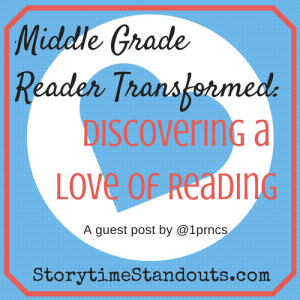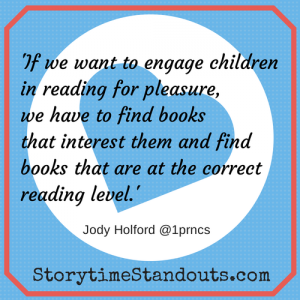Discovering a Love of Reading – Tips for the Middle Grades
Though children have to read, they don’t have to love reading. In fact, I have at least one student every year that insists they do not love it. Some even tell me they hate it. This is my favourite challenge of the school year. Watching a middle grade reader make the transition from reading for necessity to reading for pleasure is, quite simply, awesome.
 With the school year fast approaching, I’m wondering who that student will be this year? Which books will hook him/her? What made him/her dislike reading? How difficult will it be to change his/her mind?
With the school year fast approaching, I’m wondering who that student will be this year? Which books will hook him/her? What made him/her dislike reading? How difficult will it be to change his/her mind?
Maybe it’s my own love of reading, of character rich stories, that makes me need to see this transition take place. I want all of my students to enjoy books, to learn from them, and to feel connected with them. But it’s those kids that think they can’t find enjoyment in a book, that see reading as a chore, that intrigue me.
I am very fortunate that my own daughters have inherited a love of literature.
We foster that love by having books everywhere in our house, reading on our own and with them, and taking them to the library and book stores simply to browse. It must be something more than this, however, that hooks children on reading because I have many friends and colleagues that do the same with their children, yet reading is not their child’s first choice of activity.
For me, books are about the characters and their journey.
If I don’t connect to the characters, I’m likely to give up on the book. Children are no different; if we cannot find something that captures their attention, almost immediately, they are likely to give up. If we want to engage children in reading for pleasure, we have to know them well enough to push them in the right direction. To me, this means two things: finding books that interest our children and finding books that are at the correct reading level.
Finding interests is fairly simple because you can talk to kids and easily get a sense of what excites them. Our school librarian is fantastic for helping me find certain “types” of books that I know will appeal to different kids. What I find can be the most challenging, is getting books that interest kids, are at the appropriate level, and look like a book a grade five student should be reading. This is the age where what friends think really matters. My students don’t want to be reading some ‘babyish’ book while their friends are pulling out The Lord of the Rings
and Harry Potter . So to this end, I am eternally grateful for the graphic novel.
Vivid, bright pictures appeal to most people. Graphic novels remind me of great advertisements; they are designed to draw you in and make you feel like you need to know more. They capture the reader’s attention quickly, move at a fast pace, and yet they still retain the story elements that are part of regular novels.
I am amazed by the amount of graphic novels available in a variety of age ranges.
There are so many great series, such as Nancy Drew, Bone
, Diary of a Wimpy Kid
, and Amulet
. You can find graphic novels that teach history and science or tell tales of favorite super-heroes. This is a huge market and it gets bigger every day. Kids are drawn to the way stories are told in speech bubbles and brief text boxes. For the reluctant reader, this genre can make reading at a lower level more appealing and less intimidating, while still managing to fit within socially acceptable appearances. That is not to say this is the best or the only form of getting kids on board with reading. In fact, it’s important to remember that getting a kid to love reading is going to depend entirely on the child in question. If the interest starts with reading the subtitles in non-fiction while looking at pictures or flipping through Ripley’s Believe It Or Not
, so be it. Once they begin gravitating toward reading and changing their feelings toward the activity, making further inroads becomes easier.

It’s not always the case that students that don’t like to read are ‘low’ in this area. They may read quite well at grade level or above and simply not enjoy the task. Regardless of the ability or background reasons, I still feel compelled to at least try to change their minds.
I guess it’s natural that when we really love or enjoy something, we want to share it with others. Equally natural, is the desire to become involved in activities that excite others. The students can’t help but sense my enthusiasm for reading and perhaps, that in itself, is the hook.
I hope I haven’t generalized too much or made it sound easy to engage students in areas they’d rather avoid. It’s not easy. But if it works, if you can really hook them you get to be a part of a wonderful transition that can, quite literally, change lives.
For more information, visit our page about reluctant readers.









































Jody, your students are truly blessed. It is wonderful to hear your passion for books and readers. You are so right about the explosion of books in the graphic novel format. It is especially great to see some of the titles oriented to girls.
Carolyn, your kind words always make me feel great. Thank you. I’m very happy to have found your site 🙂